In orthodontic treatment, we are fortunate to have several different resources to address a variety of malocclusion. Since the 1980’s TAD’s (temporary anchor devices) were introduced as a tool in orthodontics. They allow us to use an anchorage system that widens the scope of treatment plans.
Similar to many other tools in orthodontics, TAD’s are primarily used with fixed appliances to facilitate different corrections. Direct or indirect anchorage setups can be combined with braces. In an aligner practice, the use of TAD’s also becomes an option and can serve to increase the ability of the orthodontist to setup patient care for success. Consider we can use the force systems and the strengths of a TAD, to enhance aligner therapy.
There are many options for integrating TAD’s with aligner systems. I am not an expert with them, but I want to share my experience in using this orthodontic tool to better serve patients. I have found TAD’s help broaden the range of applicability in complex, aligner treatment.
Molar Intrusion
TAD’s can be placed and supported by elastics or chain to intrude posterior teeth in combination with an aligner system. Usually buccal and lingual TAD’s with elastics will support the intrusion. If lingual TAD’s are considered, add a significant amount of expansion to counteract the lingual component in the intrusion.
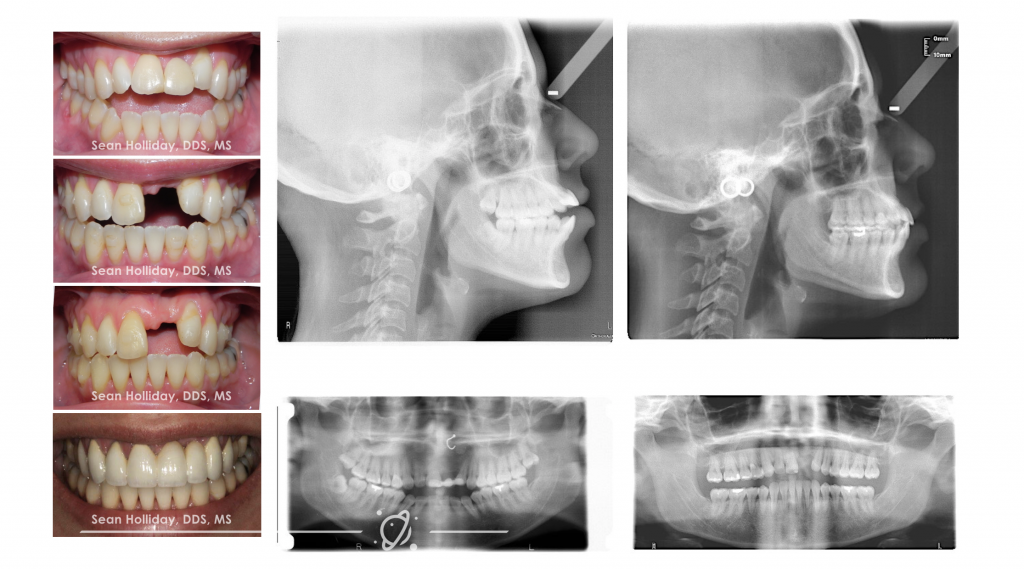
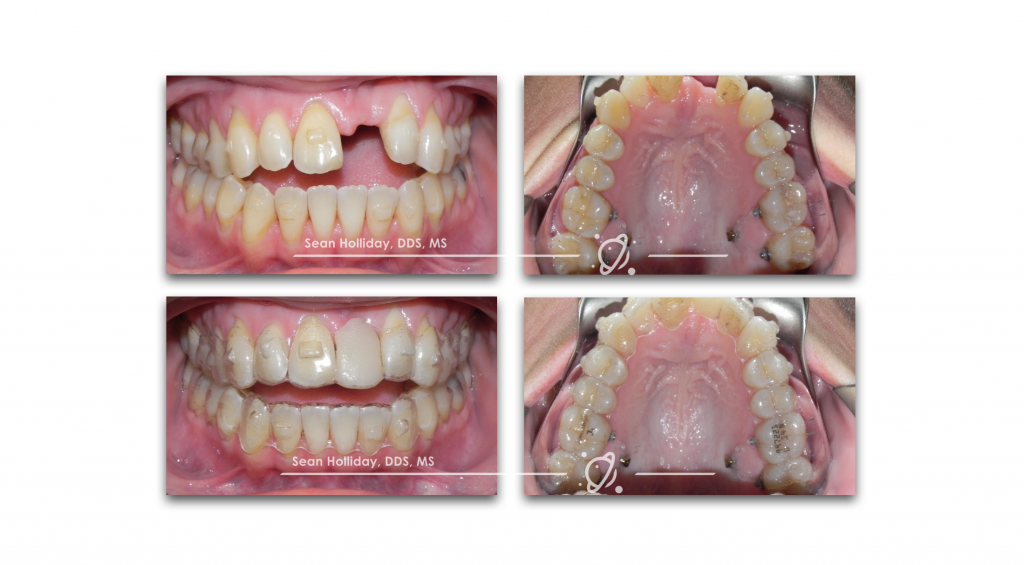
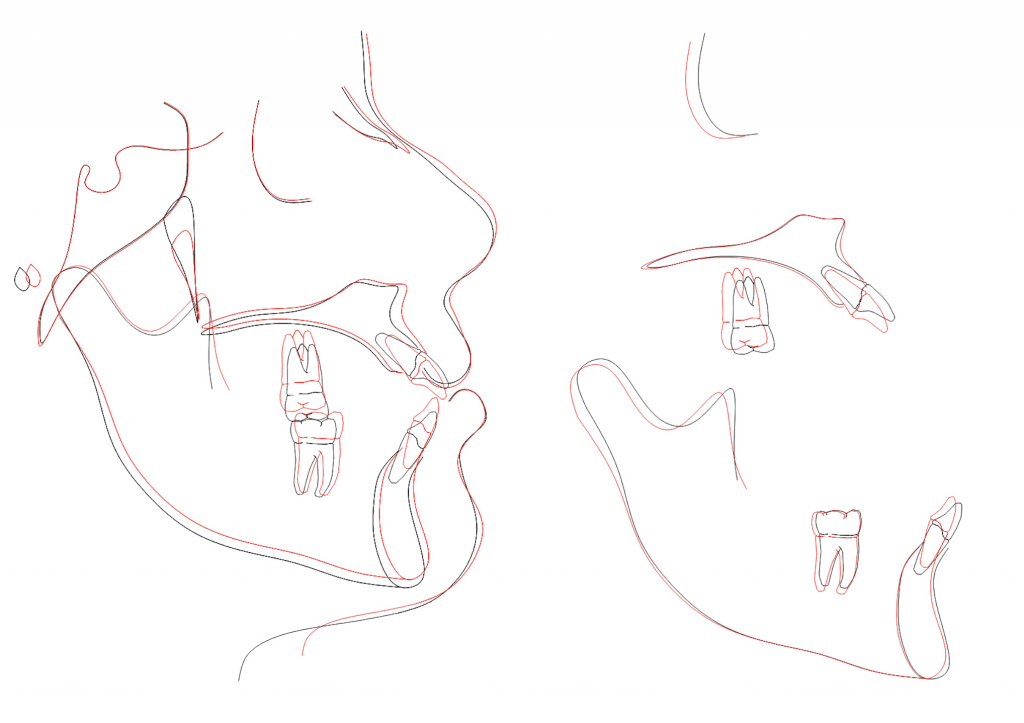
Pontics and TAD’s
The use of aligners allows for custom pontics to be placed in edentulous regions. This allows for the pontic and the aligners to be seamlessly integrated with a TAD supported, pontic crown. The temporary crowns can be used as an anchorage system to facilitate mesial or distal movement where insufficient posterior support is present.
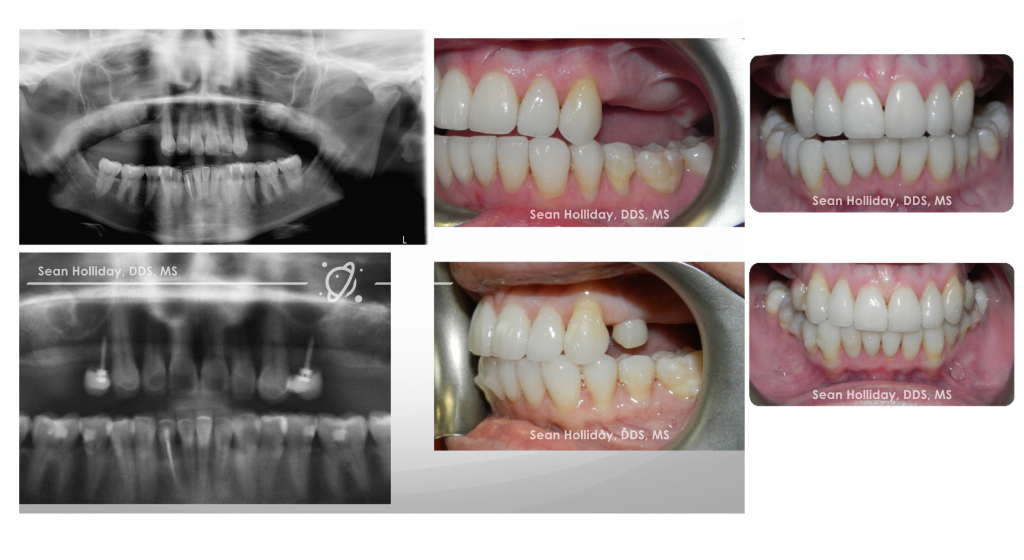
Segmental Treatment
Sometimes, the use of limited, fixed appliances are best suited for significant root movements or tooth translation. Segmental mechanics with a TAD supported appliance allows for challenging movements in localized areas. A TAD supported pontic with bracket segments can be used along side aligner therapy.
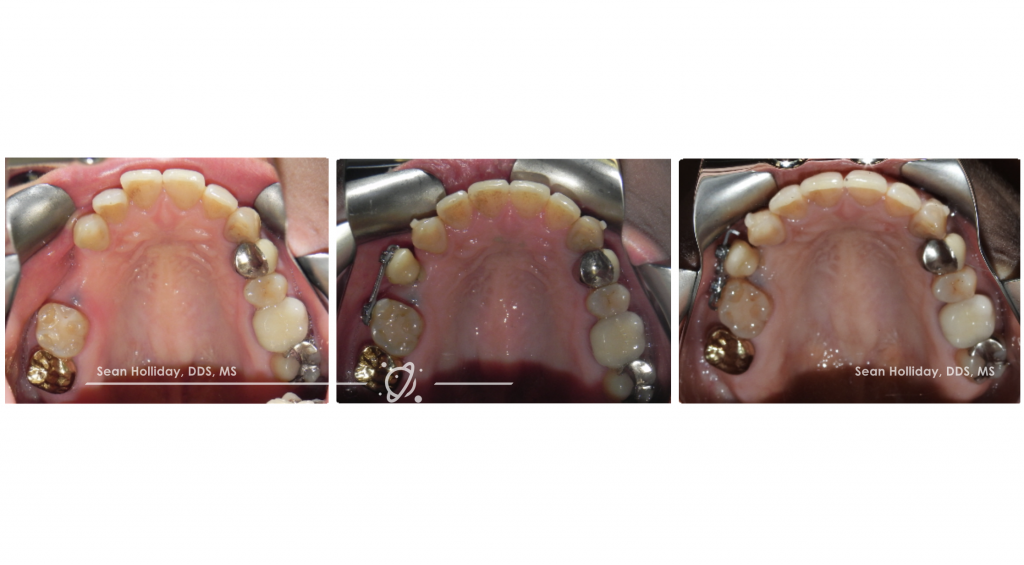
TAD’s and Power Arms
In some cases, tools available in the Invisalign system can be combined with TAD’s to broaden the range of movements. Power arms can be used to support significant mesial movements and root control in an otherwise challenging aligner force system.
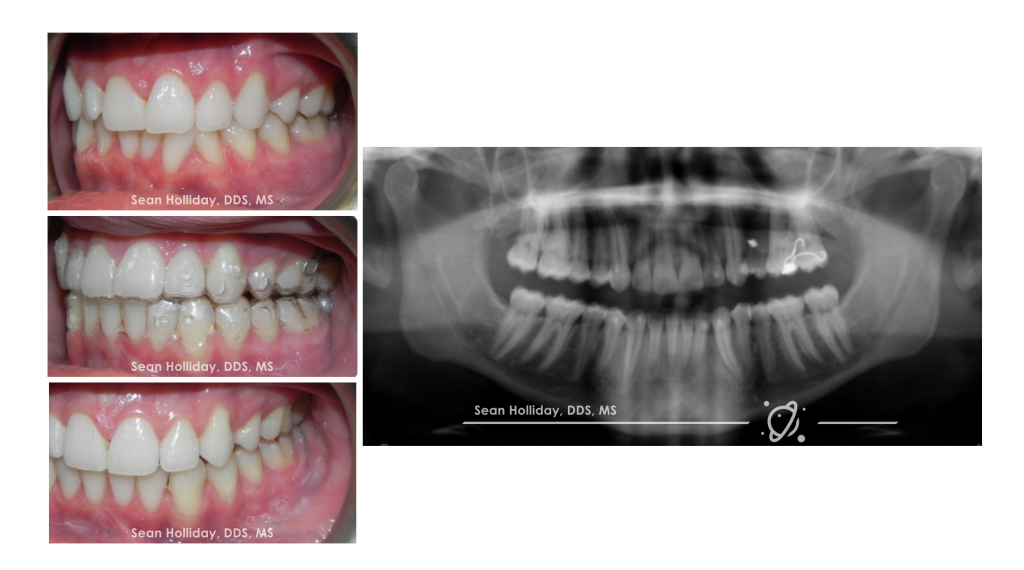
These are but a few examples of the integration of TAD’s into aligner therapy. These tools offer many creative options when we allow our imagination to develop treatment plans for our patients.
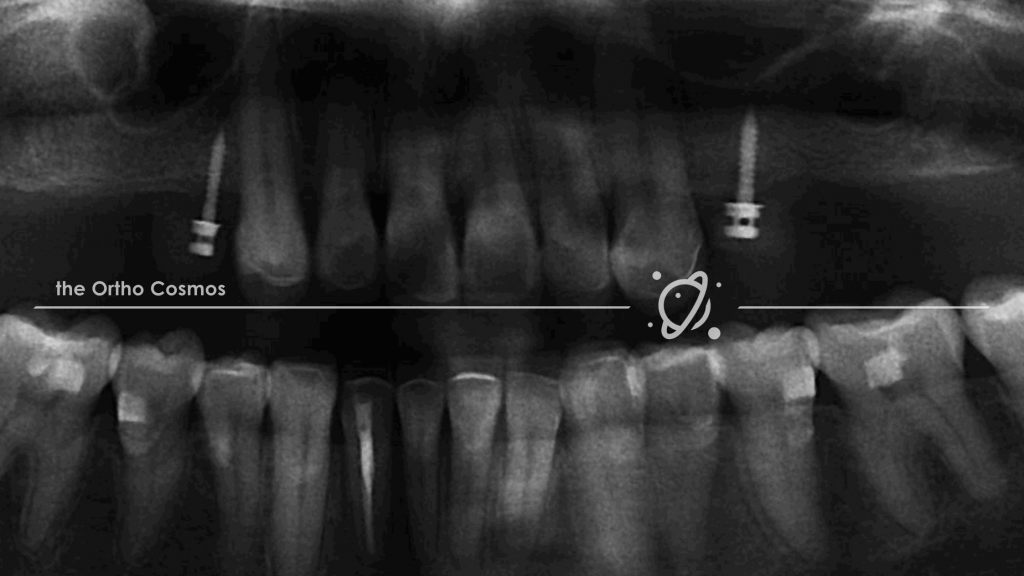
Have you ever run an elastic over the aligner from buccal to lingual to intrude posteriors- would involve patient cooperation—-?
Yes, this is an effective technique. It does involve patient placing elastics, but I find cooperation is favorable for these cases.
A full cusp CL II in a 17 year old .. Is progressive distalisation with aligner alone sufficiant or do we need TAD’s . If yes where do we place them ?
I have rarely used TAD’s for Class II correction, although I did treat an adult male using a motion appliance and TAD’s between U5’s and 6’s. Power chain from TAD to mesial portion of motion appliance. Rarely I use sequential distalization unless there is a blocked out tooth. Most cases in growing patients, I use elastic simulation and Class II correction movements, I have treated some 17 year old males in this fashion. This would depend on some of the diagnostics on the case.
I am looking to order power arms , how can i do this please ?
Rebecca, power arms need to be custom bend. So we either do this chairside with some arch wire or our in-house lab will prepare a custom bent design.
Hi, I am trying to find the power arms online to order for my treatment plan. I have been unable to find the power arms on a website in the US. Any help would be greatly appreciated.
Power arms need to be custom bent. So we either do this chairside with some arch wire or our in-house lab will prepare a custom bent design.
Hi Sean! have you ever used TADS to help with intrusion of the upper anterior? We are looking for about 3mm of intrusion to reduce the gingival display and have not been successful with aligners by themselves.
I haven’t done it often, but I do have a case currently managing a cant so we are using an anterior TAD on the left to intrude these. In anterior TAD intrusion, I bond buttons on central and canine, TAD between U2 and U3, run power chain to intrude. Monitor torque closely. To do the cut outs on the aligners, request the gingiva raised on the facial to accommodate the buttons.